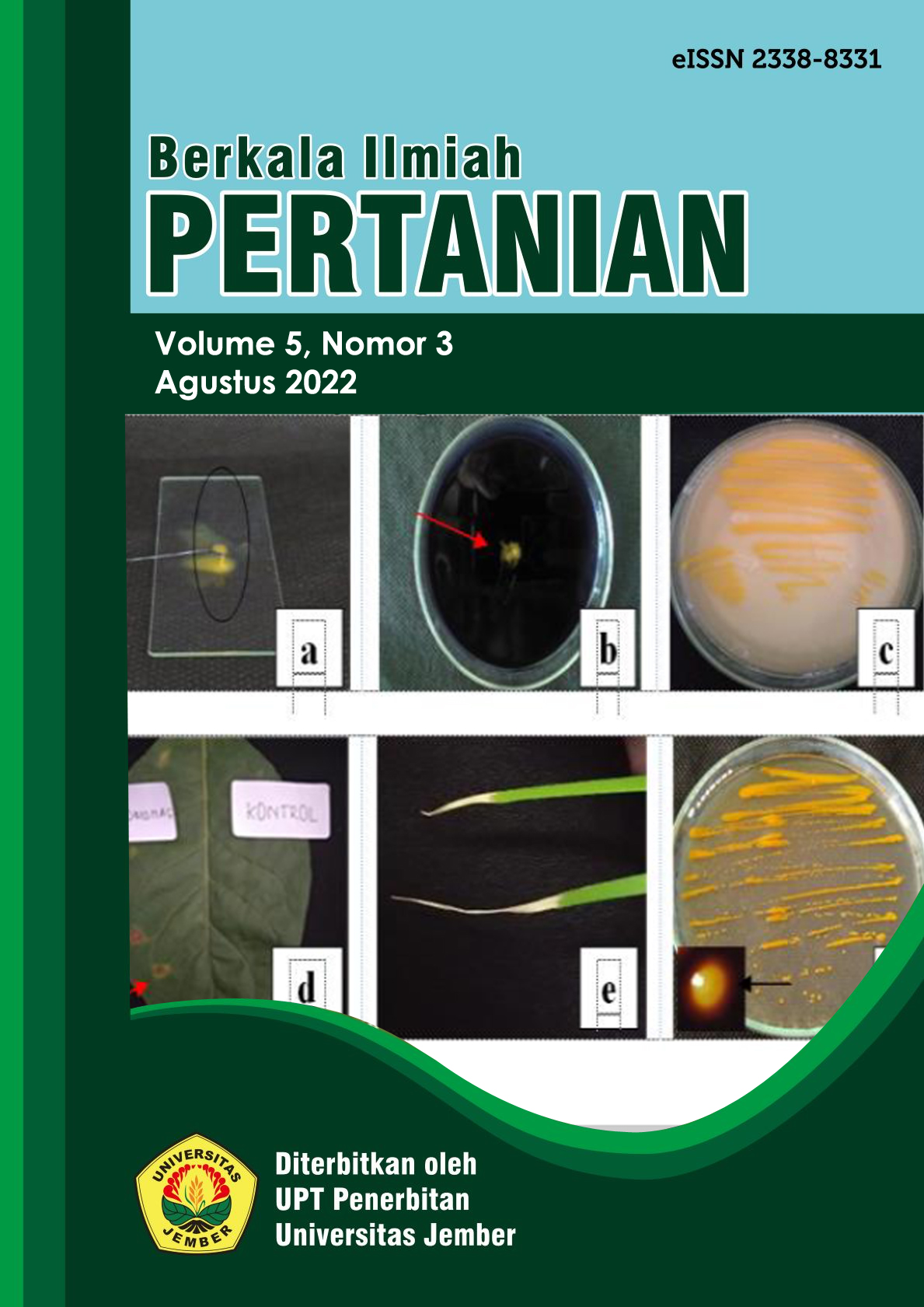The Effect of Maize Weevil Population Density (Sitophilus zeamais M.) on Maize Weight Loss and The Number of Progeni
Abstract
The effort of increasing corn production is not only observing the process of the cultivation, but it also needs to observe the handling of post-harvest in order to be able to keep the quality of corn.Post-harvest handling that needs to be considered is when storage. In the storage of corn or other grain can be stored shrinkage of grain weight, this is changed by the presence of fungi, rats and insects. Post-harvest insects that are mostly found in storage are Sitophilus zeamais M. or Maize weevil. The population density of S. zeamais will affect the corn shrinkage, damage, and the number of progeny. This research aims to investigate the effect of S. zeamais population density toward the corn seed damage, shrinkage, the number of progeny, sex ratio, and mortality. This study uses a Completely Randomized Design (CRD) consisting of 5 treatments and repeatition for about 3 times. This treatment consists of pest infestations of 3 pairs, 6 pairs, 9 pairs, 12 pairs and 15 pairs.The result shows that the different population density in every treatment impacts the corn seed damage, weight loss, number of progeny, sex ratio, and the mortality. The population S. zeamaisof 15 pairs in the treatment can cause the damage of seeds for about 50,00%, 39,43% of weight loss, and the amount of progeny for about 171,67 and the mortality for about 33,33%. The population S. zeamaisof 3 pairs in the treatment can cause the damage of seeds for about 20,67%, 11,82% of weight loss, and the amount of progeny for about 56,67 and the mortality for about 16,67%.
Keywords :Corn, Population Density, Sitophilus zeamais M., Maize weight loss.
Authors who publish with this journal agree to the following terms:
1.Authors retain copyright and grant the journal right of first publication with the work simultaneously licensed under a Creative Commons Attribution-NonCommercial 4.0 International License that allows others to share the work with an acknowledgement of the work's authorship and initial publication in this journal.
2.Authors are able to enter into separate, additional contractual arrangements for the non-exclusive distribution of the journal's published version of the work (e.g., post it to an institutional repository or publish it in a book), with an acknowledgement of its initial publication in this journal.
3.Authors are permitted and encouraged to post their work online (e.g., in institutional repositories or on their website) prior to and during the submission process, as it can lead to productive exchanges, as well as earlier and greater citation of published work (See The Effect of Open Access).

















